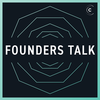Jeff Cayley joins Adam to talk about selling mountain bikes all over the planet and making some of the best outdoor and mountain bike gear, parts, and accessories you can buy. They have a killer YouTube channel as well.
Jeff Cayley: Because at the time, it was like “If I could make $60,000 a year, I could comfortably pay rent and travel a little and ride bikes.” I don’t know, it wasn’t really that thought through. It was just like “Oh, that’s a living wage.” I was making like 30 at the bike shop. If I can make 60k, I’m going to be having a great life.” I don’t know, that’s all I thought about… Which is so funny how much my brain has evolved, and how quickly it evolved just in a few years of starting the business. But that was the initial focus, which I look back on and still laugh at.
But going back to what I said about the way that these software products were coming online in the industry, and the industry was figuring out API feeds, or just data feeds and yada-yada, some of the initial ones were just that; literally, just that - just figuring out how to use software tools, and build a little tech stack that could then push distributors’ inventory data feed into your ERP system, and then you could modify it in a certain way, and then you could advertise and sell that product. Just little weird backend technical things like that. That was some of the first things that put us on the map
[00:28:02.27] And that financial model was actually pretty amazing, because it didn’t really cost much at all in terms of upfront expense. It was very minimal cost to just build this little tech stack, get the products advertised, and then you were up based on a just-in-time inventory model. So you’d sell something for $100 that you didn’t even own, then you would take $70, give it to the distributor, then you would ship the thing out, and now you’ve made 20 bucks. And then just do this over and over again. Just really simple, basic, just-in-time inventory model.
That was the first thing, just figuring out a little strategy like that. And then that only goes so far… Then it becomes like “Okay, now we need to build a website, and now we need to figure out customer acquisition costs, we need to understand how sustainable is it to have an eBay brand, an Amazon brand, versus your own website, and have great repeat customers on your own website.” So you start to understand the viability of all these different ways of selling things, and the viability of how you acquire customers and retain customers…
And so the second piece was “Okay, now we need to figure out how to market really well.” And we didn’t really put a crazy amount of tactical effort into that, because you can’t as a retailer. Because as a retailer, you’re mostly confined to this about 30 points of gross margin, which is quite small. So you don’t really have much room for customer acquisition costs, so you have to pretty much do it in a very, very bootstrapped way. And that came down to content marketing. And that was – so I got really interested and good at SEO, and figuring out how to take knowledge out of my head about random things, whether that was how to set up clipless cleats on your pedals, how to tune your suspension, random stuff like that, and writing it out into articles.
And then we started making YouTube videos, and we started talking to the camera, and rambling off random things that we thought… You know, most of the original ideas for the YouTube videos were fielding all these customer questions. And there’s a lot of this complicated compatibility stuff in the bike industry. It’s like “Does this fit this? Does that fit that? What would happen if I put this fork on this bike?” Random stuff like that. So then we would just make YouTube videos based off of those questions, to just educate people. And there was still a huge gap in the marketplace on YouTube for that. There just wasn’t those videos. So we just started making educational mountain bike videos about upgrading your bike, compatibility things, tips and tricks, random stuff like that. And that was largely free, in a sense. It was just me talking to a camera. We’d do some super-basic editing and [unintelligible 00:30:34.19] on YouTube. And people really liked it.
And that had a lot of side effects that I never knew were going to happen… Because not only were we then educating mountain bikers and getting views and getting brand awareness, but then people were going “Hey, I actually like these guys. These guys seem cool and genuine and they helped me”, and people naturally have some level of reciprocation in them, and they’re like “Because these guys helped me, I want to buy at this retailer.” And we saw that happening and we go “Oh, this is actually building us fans, not just customers. It’s people that actually genuinely appreciate that we wrote and/or filmed useful educational mountain bike content that was helpful for them. And then now they like us and want to shop with us, instead of our competitors selling the exact same product, at the exact same price.”
So you start just learning these things, like “Oh wow, that actually worked quite well. Let’s just double down on that and make more useful videos. And let’s make more useful content.” And so that was the next big lever that helped really put Worldwide Cyclery on the map, that made people realize who we were, and just want to shop with us. That was a big one.
And of course, there’s the thousand other small things that people love to gloss over… But if any business is successful, there’s 1000 other things behind the scenes that you have to do to win. Maybe the big, overarching, obvious strategy I can tell you was - yeah, we got quite sophisticated at content marketing and built an audience, and that made people want to buy with us, but realistically, we still needed to have a good website, we still needed to fulfill those orders on time, we still needed to have really timely responses to our phone calls and emails to help people out, to solve warranty issues, to just do the basic stuff that customers had a great customer experience with when they shopped with us.
[00:32:23.22] And that was a strategic advantage, because a lot of these incumbents, they were terrible at answering emails or phone calls, or just their customer experience was terrible… They were very transactional, in an industry that shouldn’t be transactional. This is a passion-driven industry; you should be able to call and talk to someone who actually rides bikes, and they can tell you their experience with this product, and if it’s compatible or not, and if they like it. You shouldn’t be getting some boilerplate, weird, useless answer. People started realizing a lot of these incumbents were almost like fulfillment houses. It’s like, “I could just buy something here, but that’s. It ends there. They don’t know anything about the product.”






